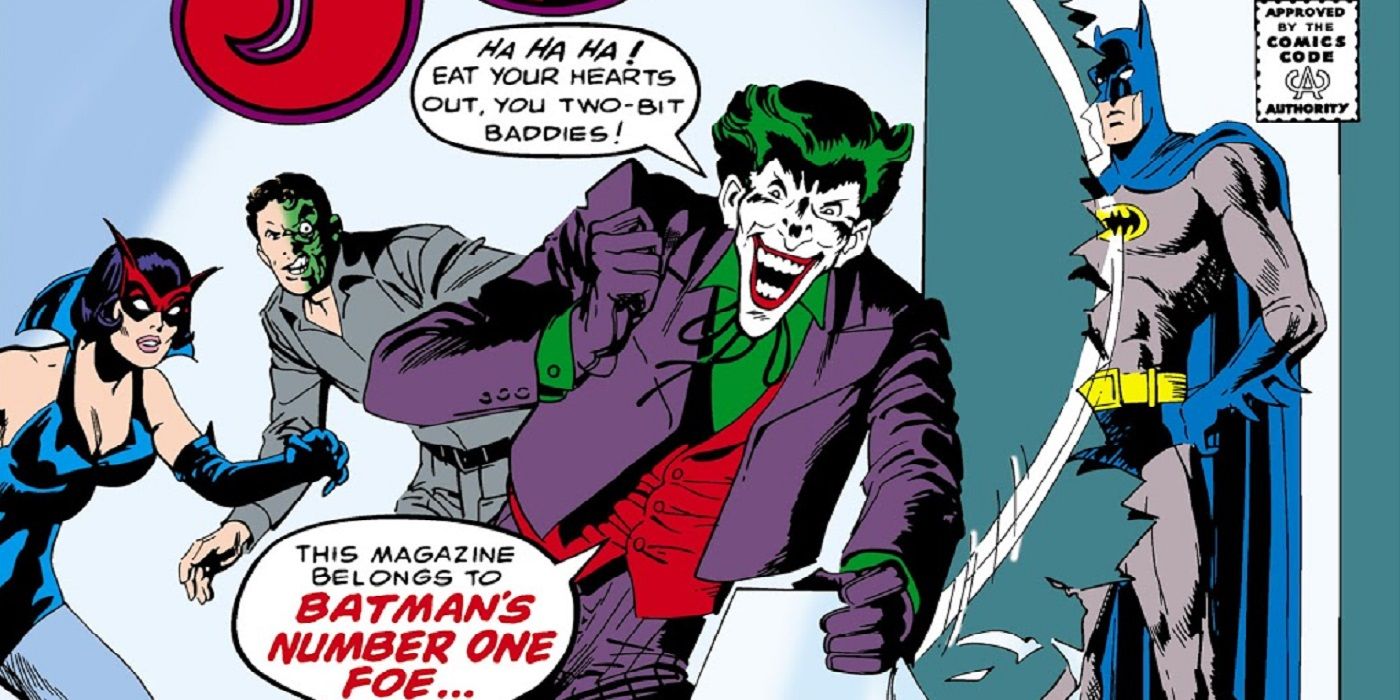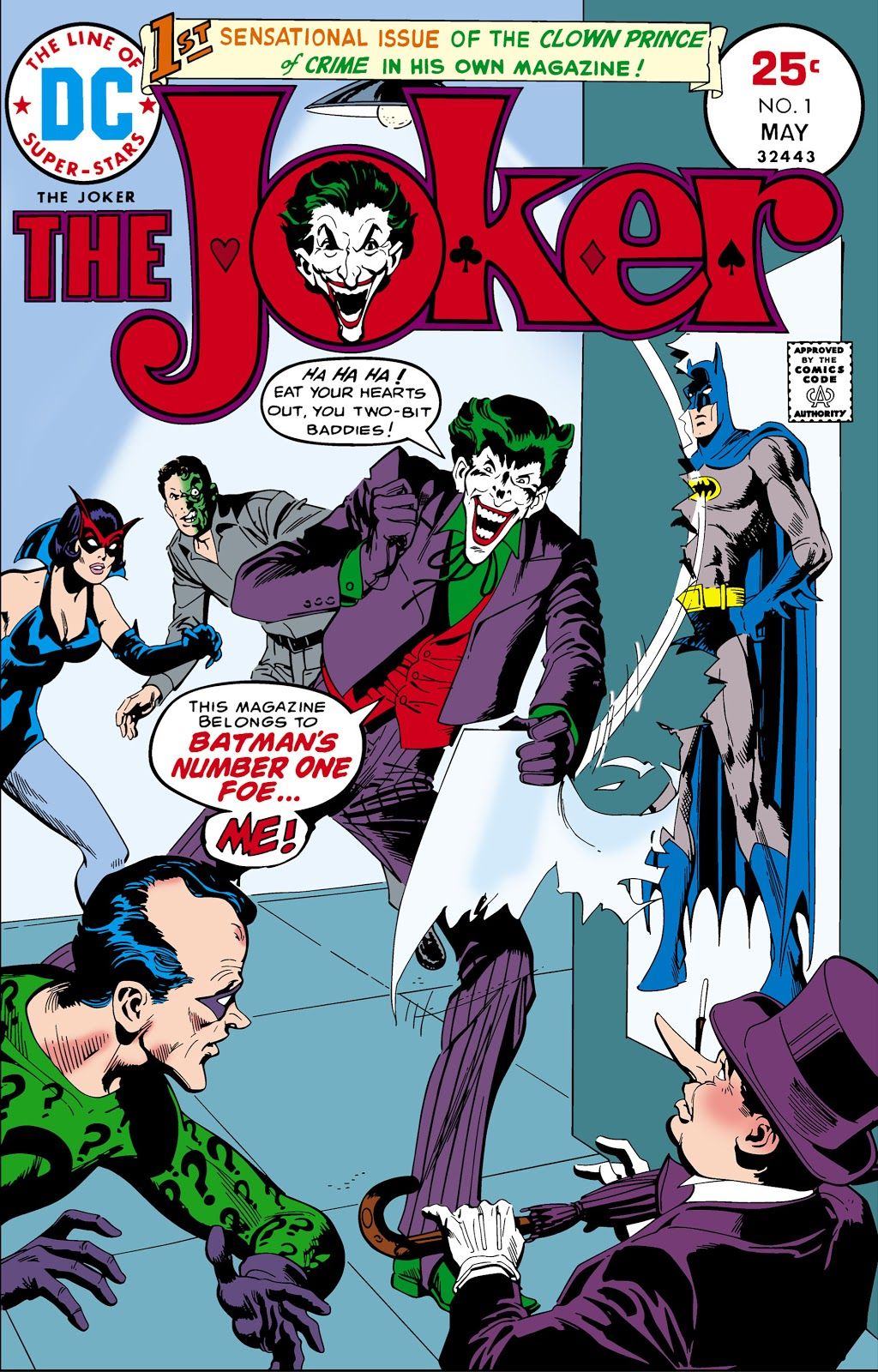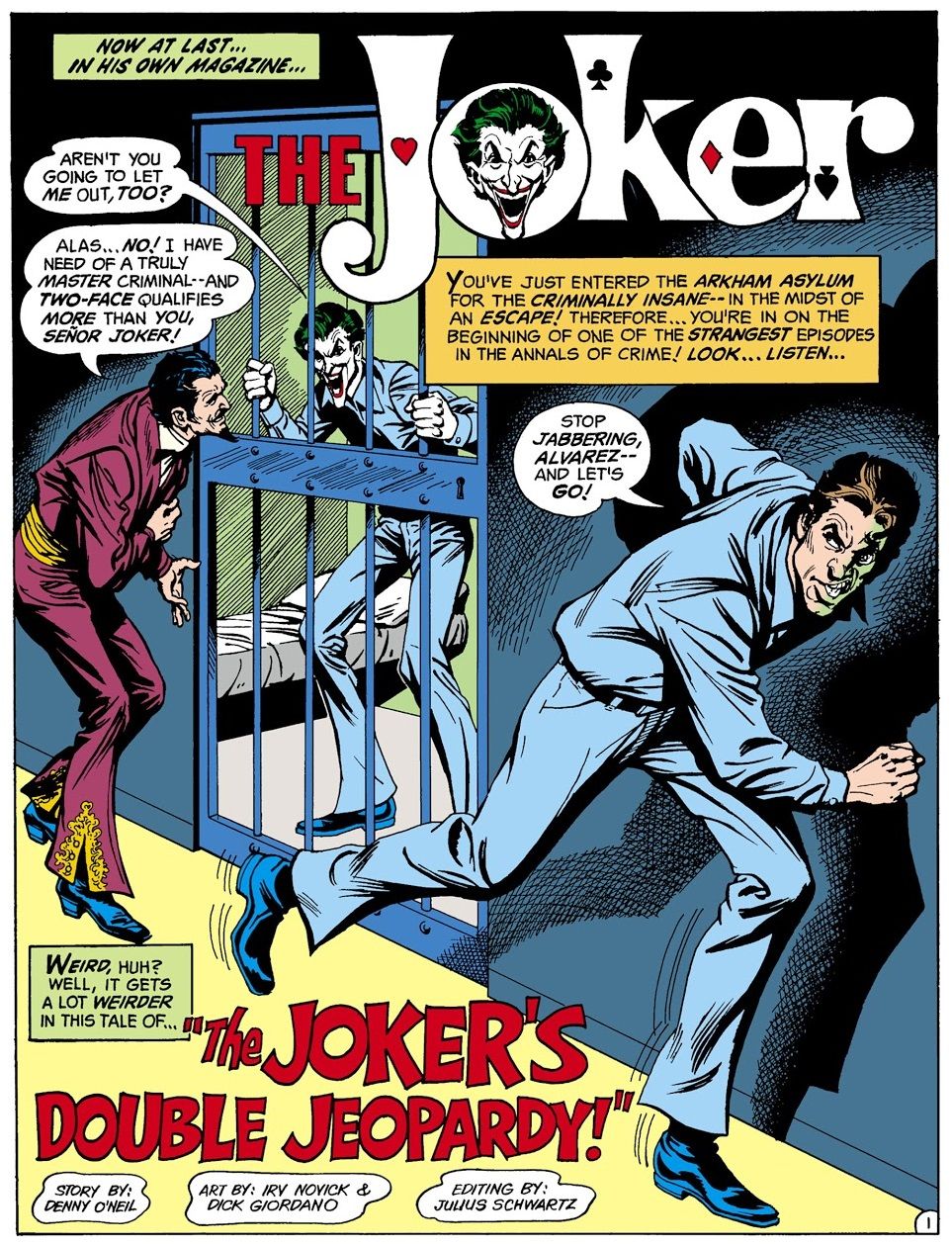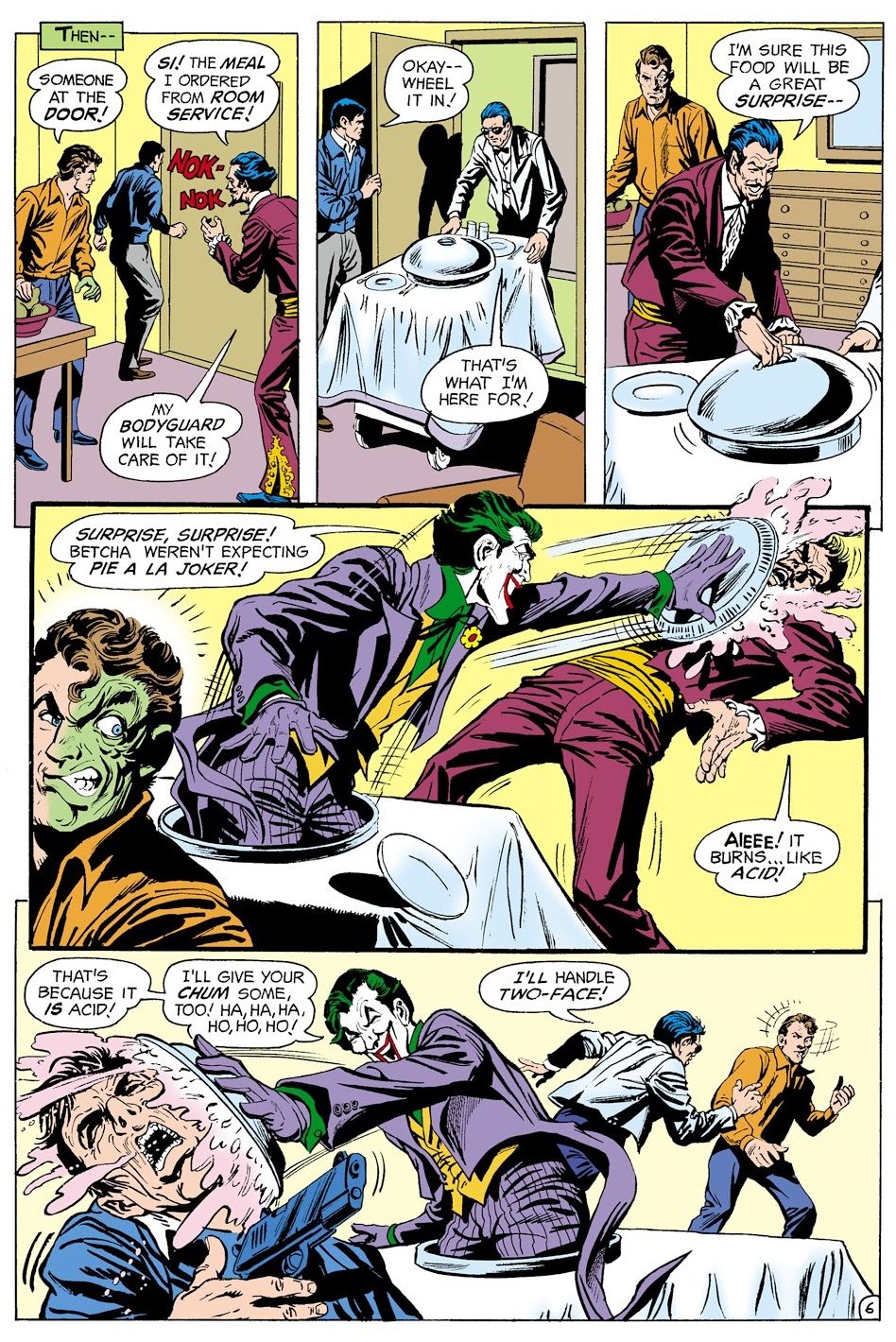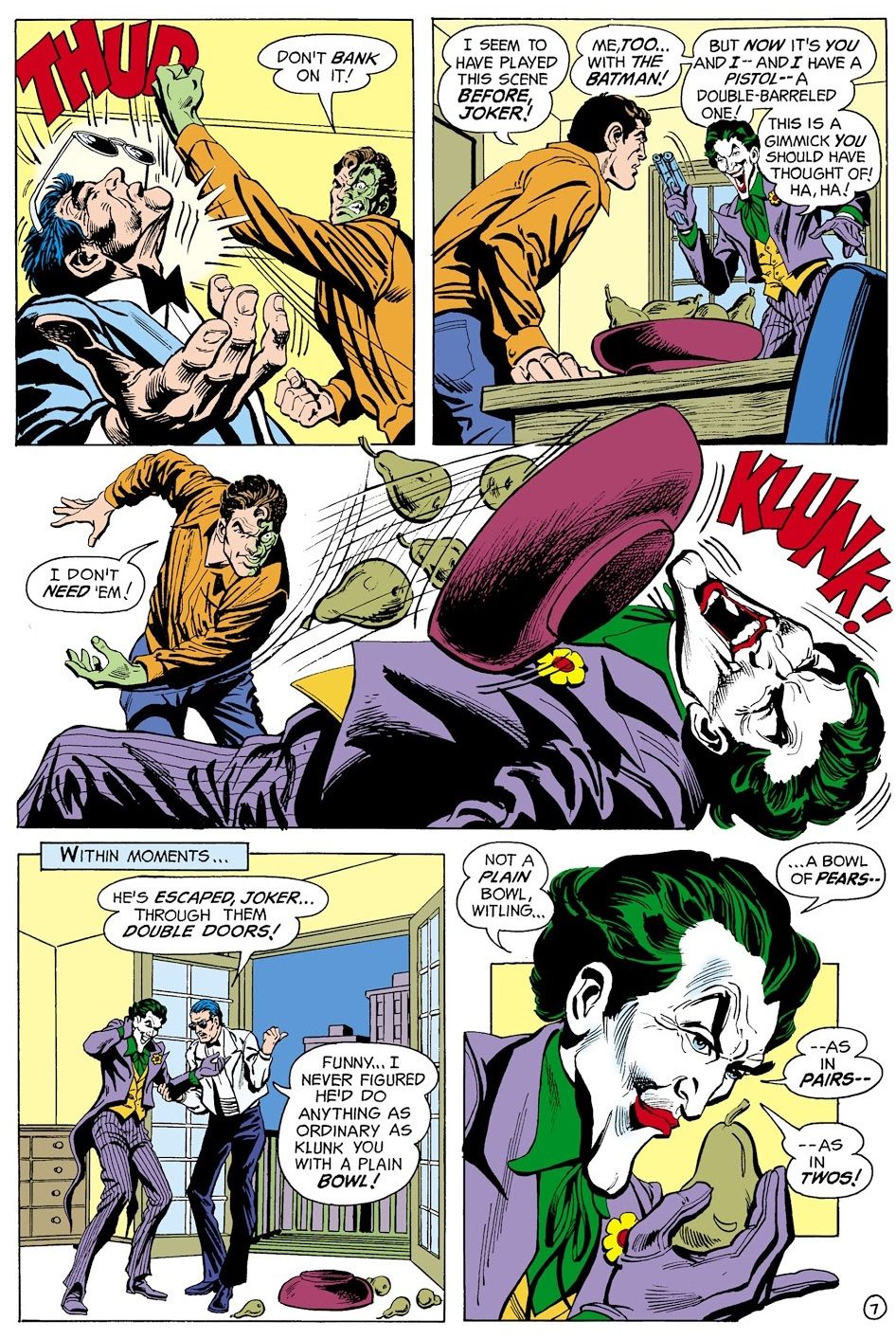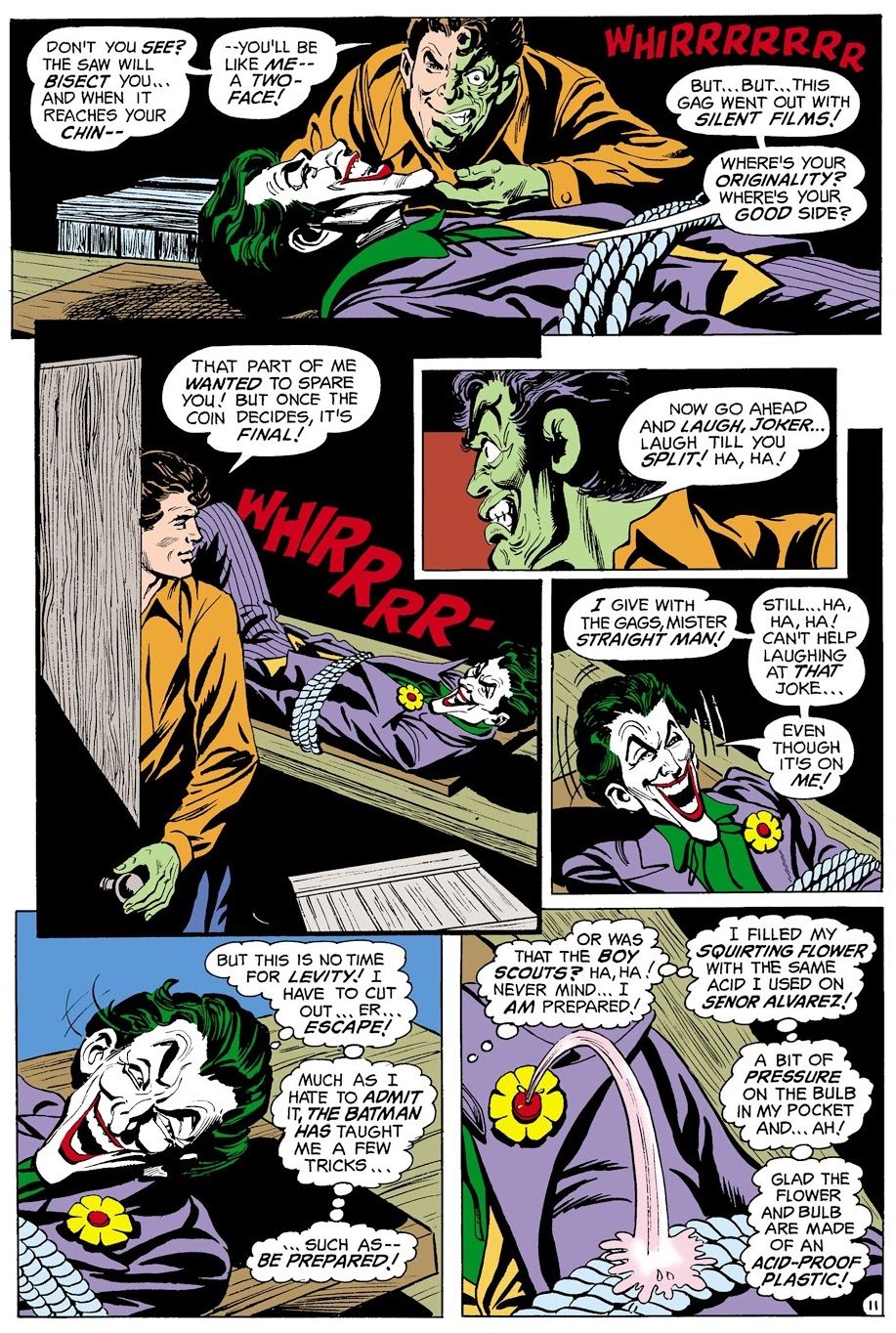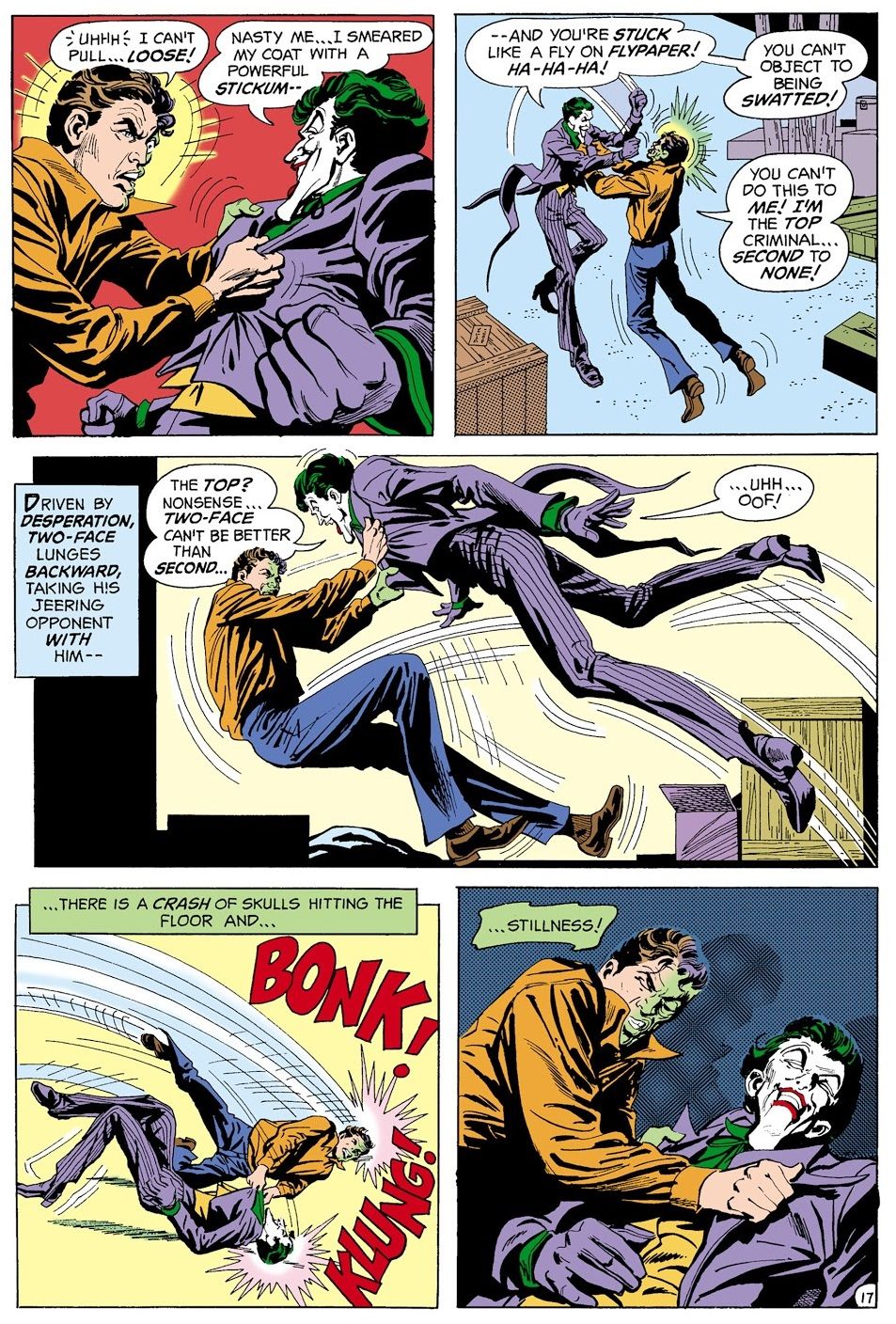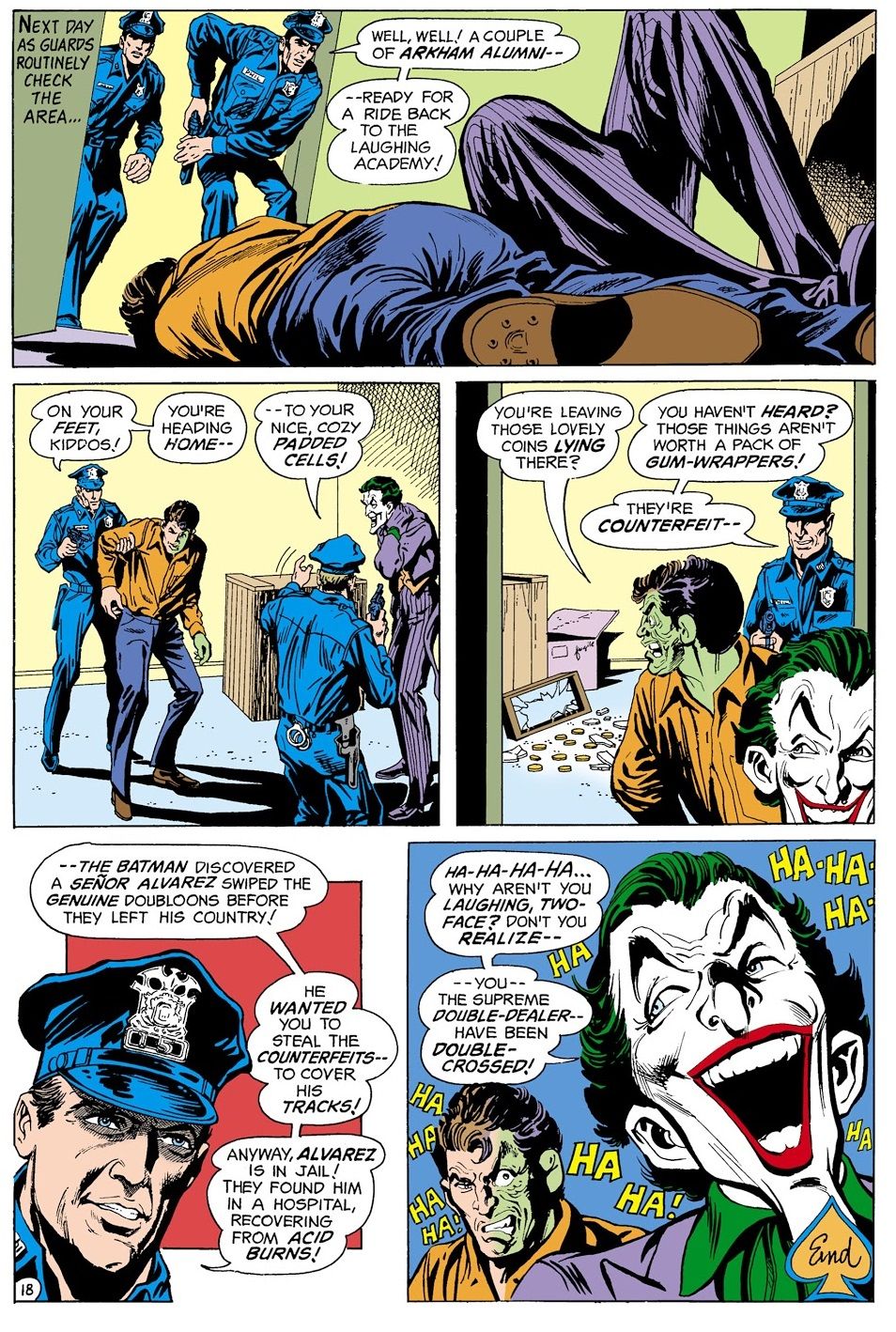Welcome to Comic Book Legends Revealed! This is the seven hundred and fifty-first installment where we examine comic book legends and whether they are true or false.
Here is Part 1 of this installment's all-Joker-themed legends! Here is Part 2 of this installment's all-Joker-themed legends!
NOTE: If my Twitter page hits 5,000 followers, I'll do a bonus edition of Comic Book Legends Revealed that week. Great deal, right? So go follow my Twitter page, Brian_Cronin!
COMIC LEGEND:
The 1971 reworked Comics Code still had a rule that anyone committing a crime had to be punished.
STATUS:
True
In 1975, the Joker got his own ongoing series, making him the first supervillain to have his own solo ongoing series (Doctor Doom had been the lead feature in Astonishing Tales briefly)...
The series opened with the Joker being paired against Two-Face over who was the better criminal...
The Joker sprung a trap on Two-Face...
Later, the Joker used an acid-squirting flower for the first time...
In the end, though, their competition ended up with both of them getting caught...
That, Denny O'Neil recalled, was perhaps the main reason why the book didn't sell very well. He explained it in Michael Eury's excellent Batcave Companion for TwoMorrows...
"The Comics Code had enough teeth left that we had to kind of follow their rules." One of those rules was that anyone shown committing a crime had to also be depicted as receiving punishment, creating a problem for O'Neil in writing the star of an ongoing series: "How are you going to manage that punishment thing and bring him back and maintain any credibility or any narrative interest in all? So we did an odd sort of hybrid, and I don't think my stories worked very well."
The Comics Code was famously relaxed in 1971, so it seems hard to believe that the relaxed Comics Code still had a rule like that.
And yet, sure enough, check out the revised edition of the Comics Code from 1971 (emphasis added)...
General Standards – Part A
Crimes shall never be presented in such a way as to promote distrust of the forces of law and justice, or to inspire others with a desire to imitate criminals.
No comics shall explicitly present the unique details and methods of a crime, with the exception of those crimes that are so farfetched or pseudo-scientific that no would-be lawbreaker could reasonably duplicate.
Policemen, judges, government officials and respected institutions shall not be presented in such a way as to create disrespect for established authority. If any of these is depicted committing an illegal act, it must be declared as an exceptional case and that the culprit pay the legal price.
If a crime is depicted it shall be as a sordid and unpleasant activity.
Criminals shall not be presented in glamorous circumstances, unless an unhappy ends results from their ill-gotten gain, and creates no desire for emulation.
In every instance good shall triumph over evil and the criminal punished for his misdeeds.
Scenes of excessive violence shall be prohibited. Scenes of brutal torture, excessive and unnecessary knife and gun play, physical agony, gory and gruesome crime shall be eliminated.
No unique or unusual methods of concealing weapons shall be shown, except where such concealment could not possible be duplicated.
Instances of law enforcement officers dying as a result of a criminal’s activities should be discouraged, except when the guilty, because of their crime, live a sordid existence and are brought to justice because of the particular crime.
The crime of kidnapping shall never be portrayed in any detail, nor shall any profit accrue to the abductor or kidnapper. The criminal or the kidnapper must be punished in every case.
The letters of the word “crime” on a comics magazine cover shall never be appreciably greater in dimension than the other words contained in the title. The word “crime” shall never appear alone on the cover.
Restraint in the use of the word “crime” in titles or subtitles shall be exercised.
So yes, even in the mid-1970s, the Comics Code still restricted all stories involving a crime to end with the criminal punished. That Code wouldn't be revised again until the late 1980s! It seems like they just sort of wink wink nudge nudge ignored this one over the years.
In the latest TV Legends Revealed - Which character was edited into the premiere of Carol's Second Act this TV season?
Feel free to send in legends suggestions to me at either cronb01@aol.com or brianc@cbr.com!

